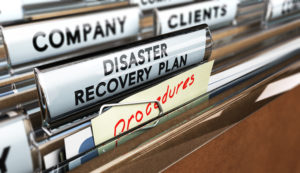 Helping your customers create a disaster recovery plan is sort of like helping them write their wills. They may not need it for a long time, but once they do, it’s too late to do anything about it. Your customers should take time now to create a disaster recovery plan to ensure business continuity in the event of a natural disaster.
Helping your customers create a disaster recovery plan is sort of like helping them write their wills. They may not need it for a long time, but once they do, it’s too late to do anything about it. Your customers should take time now to create a disaster recovery plan to ensure business continuity in the event of a natural disaster.
Here’s a structure your customers can follow for creating disaster recovery plans:
Get management on board. Creating a disaster recovery plan requires time and other resources, so get buy-in at the executive level. Talk with execs about the recent impact of Harvey, Irma, and Maria to drive home the importance of a disaster recovery plan. Some companies went a week or more without power, so take a few minutes to estimate what a week without power would cost your company, versus the cost of developing a disaster recovery plan.
Identify the necessary elements for business continuity:
- Make sure phones are operational for continued service to your clients.
- Be prepared to offer support to customers and employees.
- Determine what level of collaboration you’ll need between employees.
- For remote employees, provide power banks for mobile phones in case of extended outages.
- Determine how your customers will place orders if the internet is down, and how you will support customer needs if there’s no power.
- Make a plan for how to handle and route incoming calls.
Create a plan and test it. Once you’ve identified your needs for business continuity during a natural disaster, you can begin to implement written steps. After you have the steps laid out, begin to test your plan. Do this with the expectation that testing your disaster recovery plan will not be a one-time task. Not only will you need to make adjustments and test again, but the plan should be tested and refined on a regular basis.
Here are the steps for creating your disaster recovery plan:
- Select a team that can prioritize the disaster recovery requirements, establish steps, and determine in what order those steps should be completed. Team members can also network with similar businesses and establish best practices for disaster recovery.
- Perform a risk assessment, identifying the areas of the business that must be prioritized.
- Conduct a test, along with a plan for completing quarterly tests and adjustments to the disaster recovery plan.
- Educate employees on how to execute the plan.
- Formalize the plan, and print it out for safekeeping in case of a power outage where the system goes down.
At eXemplify, we believe that disaster recovery is a key piece of a strong security strategy. Contact us to discuss how to help your customers implement a disaster recovery plan in more detail.